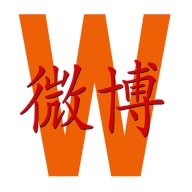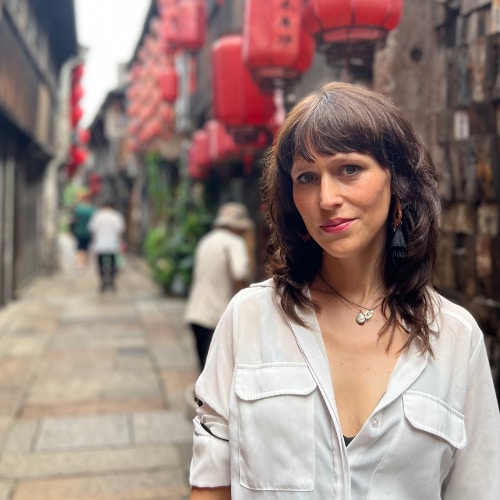China Insight
Follow the Leaders: These Are All the Members of China’s 20th Central Committee & Politburo Standing Committee
Full list of names including the members of China’s new 20th Central Committee, the Politburo, and its Standing Committee.
Published
2 years agoon

PREMIUM CONTENT ARTICLE
Which Party members will lead China in the next five years? These are the names you need to know: all the full members of China’s new Central Committee, the Politburo, and its Standing Committee.
The 20th Party Congress has concluded and China’s new leadership for the next five years has been revealed. All of the new full and alternate members of the 20th Central Committee were announced on October 22 and a day later, on October 23rd, the new seven-member Politburo Standing Committee was unveiled.
As was widely expected, Xi Jinping will continue his third five-year term as leader.
The lists with new member names went trending on Chinese social media. On Weibo alone, the hashtag “20th Central Committee Members List” (#二十届中央委员会委员名单#) received a staggering 580 million clicks within two days time. There were also other trending hashtags during the weekend of the closing session of the 20th Party Congress, such as “The Resumes of the New Politburo Standing Committee Members” (#新一届中央政治局常委简历#).
The Central Committee of the Chinese Communist Party (中国共产党中央委员会) is, theoretically, the highest authority within the Party pyramid, and its members (generally 170-205 full members) are nominally elected every five years by the National Party Congress. It is the primary authority of the Central Committee to elect the Politburo (中国共产党中央政治局), which actually is the top decision-making body in the Party (21-25 members).
Among the members of the Politburo are those of the Standing Committee (中国共产党中央政治局常务委员会), which basically is the core leadership of the Party (generally 5-11 members, including the Party General Secretary). This is the list of names that everyone has been mostly waiting to see this week.
Here, we will list the member names of China’s new 20th Central Committee, the Politburo, and its Standing Committee. We have put them in alphabetical order, based on the first letter of their written in pinyin, and have included all names in characters.
The 20th Central Committee (Full Members)
Noteworthy:
– The 19th Central Committee was composed of 204 full members (among them only 10 women), this 20th Central Committee list contains 205 full members and 11 of them are women.
– Nine of these members come from a minority ethnic group, including one Uyghur.
– Premier Li Keqiang and the head of the National People’s Congress, Li Zhanshu, the second- and third-highest ranking officials in the party, have not been included, neither have Wang Yang, the Chinese People’s Political Consultative Conference chairman and Vice-Premier Han Zheng.
Abbreviations:
– CMC = Central Military Commission
– CPC = Communist Party of China
– CSSC = China State Shipbuilding Corporation
– PLA = People’s Liberation Army
(The 171 alternate members of the 20th Central Committee, who do not have voting rights, have not been listed here).
1. Bate’er 巴特尔 (Mongolian) (Vice Chairperson of the National Committee of the Chinese People’s Political Consultative Conference)
2. Cai Jianjiang 蔡剑江 (Director of the Office of the Central Air Traffic Management Commission)
3. Cai Qi 蔡奇 (New Politburo Standing Committee member, Party Secretary of Beijing)
4. Chang Dingqiu 常丁求 (PLA General, Commander of PLA Air Force)
5. Chen Gang 陈刚 (Party Secretary of the All-China Federation of Trade Unions)
6. Chen Jining 陈吉宁 (New Politburo member, Deputy Party Secretary, Mayor of Beijing)
7. Chen Min’er 陈敏尔 (18th-20th Politburo member, Party Chief of Chongqing)
8. Chen Wenqing 陈文清 (New Politburo member, Ministry of State Security Minister, Party Secretary)
9. Chen Xiaojiang 陈小江 (Executive Deputy Head of the United Front Work Department of the CPC Central Committee)
10. Chen Xu 陈旭 (female) (Deputy Head of the CPC United Front Work Department, Director of the Overseas Chinese Affairs Office)
11. Chen Yixin 陈一新 (Secretary-General of the Central Political and Legal Affairs Commission)
12. Cheng Lihua 程丽华 (female) (Deputy Secretary of Anhui Provincial Party Committee)
13. Ding Xuedong 丁学东 (Deputy Secretary-General of the State Council of the People’s Republic of China)
14. Ding Xuexiang 丁薛祥 (New Politburo Standing Committee member, a senior aide to Xi Jinping)
15. Dong Jun 董军 (PLA Admiral, Commander of the People’s Liberation Army Navy)
16. Erkin Tuniyaz 艾尔肯·吐尼亚孜 (Uyghur) (Chairman of Xinjiang Uyghur Autonomous Region)
17. Feng Fei 冯飞 (Governor of Hainan)
18. Fu Hua 傅华 (President of Xinhua News Agency)
19. Gao Xiang 高翔 (Vice President, Deputy Secretary of the Party core group of the Chinese Academy of Social Sciences)
20. Gao Zhidan 高志丹 (Director of the State General Administration of Sports)
21. Gong Zheng 龚正 (Mayor and Deputy Communist Party Secretary of Shanghai Municipality)
22. Guo Puzheng 郭普校 (Political Commissar to the PLA Air Force)
23. Han Jun 韩俊 (Governor of Jilin Province)
24. Han Wenxiu 韩文秀 (Deputy Director, Research Office of the State Council)
25. Hao Peng 郝鹏 (Chairman and Party Committee Secretary of the State-owned Assets Supervision and Administration Commission)
26. He Hongjun 何宏军 (PLA Lieutenant General)
27. He Junke 贺军科 (First Secretary of the Communist Youth League of China)
28. He Lifeng 何立峰 (New Politburo member, head of the National Development and Reform Commission)
29. He Rong (female) 贺荣 (Deputy Chief Justice, Executive Vice president of the Supreme People’s Court of China)
30. He Weidong 何卫东 (New Politburo member, Commander of the CMC’s Joint Command Centre)
31. Hou Jianguo 侯建国 (former President of the University of Science and Technology of China)
32. Hou Kai 侯凯 (Member of Standing Committee of the Central Commission for Discipline Inspection, Auditor General of the National Audit Office)
33. Hu Changsheng 胡昌升 (Governor of Heilongjiang)
34. Hu Chunhua 胡春华 (former Politburo member, Vice Premier of the People’s Republic of China)
35. Hu Henghua 胡衡华 (Deputy Party Secretary and Mayor of Chongqing)
36. Hu Heping 胡和平 (Party Secretary of Ministry of Culture and Tourism)
37. Hu Yuting 胡玉亭 (Deputy Secretary of the Liaoning Provincial Committee)
38. Hu Zhongming 胡中明 (PLA Vice Admiral, Chief of Staff of the PLA Navy)
39. Huai Jinpeng 怀进鹏 (Party Secretary of the China Association for Science and Technology)
40. Huang Jianfa 黄建发 (Deputy Secretary of the Zhejiang Provincial Party Committee)
41. Huang Kunming 黄坤明 (19th/20th Politburo member, head of the CPC Publicity Department)
42. Huang Ming 黄铭 (PLA Lieutenant General, Chief of Staff of the PLA)
43. Huang Qiang 黄强 (Governor of Sichuan Province)
44. Huang Shouhong 黄守宏 (Director of the State Council Research Office)
45. Huang Xiaowei 黄晓薇 (female) (Party Decretary of the All-China Women’s Federation)
46. Jin Xiangjun 金湘军 (Deputy Mayor of Tianjin)
47. Jin Zhuanglong 金壮龙 (Minister of Industry and Information Technology)
48. Jing Junhai 景俊海 (Governor of Jilin)
49. Ju Qiansheng 巨乾生 (PLA General, Commander of the PLA Strategic Support Force)
50. Lan Fo’an 蓝佛安 (Governor of Shanxi)
51. Lan Tianli 蓝天立 (Zhuang ethnic group) (Chairman, Deputy Party Chief of Guangxi)
52. Lei Fanpei 雷凡培 (former Party Secretary, Chairman of CSSC)
53. Li Bingjun 李炳军 (Governor of Guizhou Province)
54. Li Fengbiao 李凤彪 (PLA General, Political commissar of the Western Theater Command)
55. Li Ganjie 李干杰 (New Politburo member, Party Secretary of Shandong)
56. Li Guoying 李国英 (Governor of Anhui province)
57. Li Hongzhong 李鸿忠 (also 19th/20th Politburo member, Tianjin Party Secretary)
58. Li Lecheng 李乐成 (Governor of Liaoning)
59. Li Qiang 李强 (New Politburo Standing Committee member, 19th/20th Politburo member and Party Secretary of Shanghai)
60. Li Qiaoming 李桥铭 (PLA General, former commander of the Northern Theater Command)
61. Li Shangfu 李尚福 (PLA General, Head of the Equipment Development Department of the Central Military Commission)
62. Li Shulei 李书磊 (New Politburo member, Executive Deputy Head of the Publicity Department)
63. Li Wei 李伟 (former Director of the Development Research Center of the State Council)
64. Li Xi 李希 (New Politburo Standing Committee member, 19th/20th Politburo member and Party Secretary of Guangdong, Secretary of the Central Commission for Discipline Inspection)
65. Li Xiaohong 李晓红 (President of the Chinese Academy of Engineering)
66. Li Xiaoxin 李小新 (female) (Vice Minister of the Organization Department of the CPC Central Committee (ODCPC)
67. Li Yi 李屹 (Party branch Secretary, Vice president of China Federation of Literary and Art Circles)
68. Li Yifei 李邑飞 (Deputy Secretary of the Party Committee of Xinjiang Uygur Autonomous Region)
69. Li Yuchao 李玉超 (PLA General, Commander of PLA Rocket Force)
70. Liang Huiling 梁惠玲 (female) (Chair of the All-China Federation of Supply and Marketing Cooperatives)
71. Liang Yanshun 梁言顺 (Party Secretary of Ningxia)
72. Lin Wu 林武 (Party Secretary of Shanxi)
73. Lin Xiangyang 林向阳 (PLA General, Commander of Eastern Theater Command)
74. Liu Faqing 刘发庆 (PLA Lieutenant General, Secretary-General of National Defense Mobilization Commission)
75. Liu Guozhong 刘国中 (New Politburo Member, Party Secretary of Shaanxi)
76. Liu Haixing 刘海星 (Deputy Director in the Office of the National Security Commission)
77. Liu Jianchao 刘建超 (Director of the International Liaison Department of the CPC)
78. Liu Jinguo 刘金国 (Deputy Secretary of the Central Commission for Discipline Inspection)
79. Liu Junchen 刘俊臣 (Deputy Secretary of Party Organs Working Committee)
80. Liu Ning 刘宁 (Party Secretary of Guangxi)
81. Liu Qingsong 刘青松 (PLA Admiral, Political Commissar of the Northern Theater Command)
82. Liu Wei 刘伟 (Chairman of the CPPCC Henan Committee)
83. Liu Xiaoming 刘小明 (former Ambassador of China to the United Kingdom)
84. Liu Zhenli 刘振立 (PLA General, Commander of the PLA Ground Force)
85. Lou Yangsheng 楼阳生 (Party Secretary of Henan Province)
86. Lu Hao 陆昊 (Party Branch Secretary of Development Research Center of the State Council)
87. Lu Zhiyuan 陆治原 (Deputy Secretary of Shandong Provincial Committee, Secretary of Qingdao Municipal Committee)
88. Luo Wen 罗文 (Head of China’s State General Administration for Market Regulation)
89. Ma Xiaowei马晓伟 (National Health Commission Director, Vice President of the Red Cross Society of China)
90. Ma Xingrui 马兴瑞 (New Politburo member, Xinjiang Party Secretary, former Guangdong governor)
91. Mao Weiming 毛伟明 (Governor of Hunan Province)
92. Meng Fanli 孟凡利 (Party Secretary of Shenzhen, Deputy Party Secretary of Guangdong)
93. Meng Xiangfeng 孟祥锋 (Executive Deputy Director of the General Office of CPC)
94. Miao Hua 苗华 (19th/20th CC, Admiral of the Chinese PLA Navy, Director of Political Work Department of Central Military Commission)
95. Ni Hong 倪虹 (Minister of Housing and Urban-Rural Development)
96. Ni Yuefeng 倪岳 峰 (Party Secretary of Hebei)
97. Nurlan Abelmanjen 努尔兰·阿不都满金 (Kazakh) (Chairman of the Xinjiang Regional Committee of the Chinese People’s Political Consultative Conference)
98. Pan Yue 潘岳 (Minister of the State Ethnic Affairs Commission)
99. Pei Jinjia 裴金佳 (Minister of Veterans Affairs)
100. Qi Yu 齐玉 (Secretary of the CPC Committee of the Ministry of Foreign Affairs)
101. Qin Gang 秦刚 (Chinese Ambassador to the United States)
102. Qin Shutong 秦树桐 (PLA General, Political Commissar of the PLA Ground Force)
103. Qu Qingshan 曲青山 (President of the Institute of Party History and Literature of the Central Committee of CPC)
104. Ren Zhenhe 任振鹤 (Tujia ethnic group) (Governor of Gansu Province)
105. Shen Chunyao 沈春耀 (Chairperson of the Legislative Affairs Committee of the Standing Committee of the National People’s Congress)
106. Shen Haixiong 慎海雄 (Propaganda Chief of Guangdong Province)
107. Shen Xiaoming 沈晓明 (former Governor of Hainan)
108. Shen Yiqing 谌贻琴 (female, Bai ethnic group) (Communist Party Secretary of Guizhou)
109. Shen Yueyue 沈跃跃 (female) (President of the All-China Women’s Federation)
110. Shi Taifeng 石泰峰 (New Politburo member, President of the Chinese Academy of Social Sciences)
111. Sun Jinlong 孙金龙 (Party Branch Secretary of the Xinjiang Production and Construction Corps)
112. Sun Shaocheng 孙绍骋 (Party Secretary of Inner Mongolia)
113. Tang Dengjie 唐登杰 (Minister of Civil Affairs)
114. Tang Renjian 唐仁健 (Governor of Gansu Province)
115. Tie Ning 铁凝 (female) (President of the China Writers Association)
116. Tong Jianming 童建明 (Grand Prosecutor and first Deputy Prosecutor General of the Supreme People’s Procuratorate)
117. Tuo Zhen 庹震 (President of the People’s Daily)
118. Wan Lijun 万立骏 (researcher, former President of the University of Science and Technology of China)
119. Wang Chunning 王春宁 (PLA General, Commander of the People’s Armed Police)
120. Wang Dongming 王东明 (Vice Chairman of the Standing Committee, Chairman of the All-China Federation of Trade Unions)
121. Wang Guanghua 王广华 (Minister of Natural Resources)
122. Wang Haijiang (PLA General, Commander of Western Theater Command)
123. Wang Hao 王浩 (Governor of Zhejiang)
124. Wang Huning 王沪宁 (Politburo Standing Committee since 2017, 19th/20th Politburo member, First Secretary of the Secretariat of the Chinese Communist Party)
125. Wang Junzheng 王君正 (Communist Party Secretary of Tibet)
126. Wang Kai 王凯 (Governor of Henan Province)
127. Wang Kai 王凯 (Lieutenant General of the PLA)
128. Wang Lixia 王莉霞 (female, Mongolian) (Deputy Party Chief, Party branch Secretary, Chairwoman of the Inner Mongolia Autonomous Region)
129. Wang Menghui 王蒙徽 (Communist Party Secretary of Hubei)
130. Wang Ning 王宁 (Party Secretary of Yunnan)
131. Wang Peng 王鹏 (Vice President and Chief of Education of the People’s Liberation Army National Defence University)
132. Wang Qiang 王强 (PLA General, Commander of the North Sea Fleet)
133. Wang Qingxian 王清宪 (Governor of Anhui)
134. Wang Renhua 王仁华 (Vice Admiral of the PLA, Secretary of the Political and Legal Affairs Commission of the Central Military Commission)
135. Wang Shouwen 王受文 (China International Trade Representative, Vice Minister of Commerce)
136. Wang Weizhong 王伟中 (Deputy Party Secretary, Governor of Guangdong)
137. Wang Wenquan 王文全 (Political Commissar of the Joint Logistics Support Unit of the Central Military Commission)
138. Wang Wentao 王文涛 (Minister of Commerce)
139. Wang Xiangxi 王祥喜 (Minister of Emergency Management)
140. Wang Xiaohong 王小洪 (Party Secretary, Minister of Public Security)
141. Wang Xiaohui 王晓晖 (Party Secretary of Sichuan)
142. Wang Xiubin 王秀斌 (PLA General, Commander of the Southern Theater Command)
143. Wang Yi 王毅 (New Politburo member, State Councillor and Foreign Minister)
144. Wang Yong 王勇 (Chinese State Councilor)
145. Wang Yubo 王予波 (Governor of Yunnan Province)
146. Wang Zhengpu 王正谱 (Governor of Hebei)
147. Wang Zhijun 王志军 (Vice Minister of the Ministry of Industry and Information Technology)
148. Wang Zhonglin 王忠林 (Governor of Hubei)
149. Wu Hansheng 吴汉圣 (Deputy Secretary of Work Committee of Central Government in charge of Daily Work)
150. Wu Xiaojun 吴晓军 (Governor of Qinghai)
151. Wu Yanan 吴亚男 (General of the PLA, Commander of the Central Theater Command)
152. Wu Zhenglong 吴政隆 (Secretary of Jiangsu)
153. Xi Jinping 习近平 (General Secretary of the Party, President PRC, Chairman of the Central Military Commission)
154. Xiao Jie 肖捷 (State Councilor, Secretary General of the State Council)
155. Xiao Pei 肖培 (Deputy Secretary of the CPC Committee for Discipline and Inspection)
156. Xie Chuntao 谢春涛 (Vice President of the Central Party School of the Chinese Communist Party)
157. Xin Changxing 信长星 (Party Secretary of Qinghai)
158. Xu Deqing 徐德清 (General of PLA, Political Commissar of the Central Theater Command)
159. Xu Kunlin 许昆林 (Governor of Jiangsu)
160. Xu Lin 徐麟 (Director of the National Radio and Television Administration)
161. Xu Qiling 徐起零 (General of the PLA)
162. Xu Qin 许勤 (Former Governor of Hebei)
163. Xu Xisheng 徐西盛 (Political Commissar of Southern Theater Command Air Force)
164. Xu Xueqiang 许学强 (General of the PLA, President of PLA National Defence University)
165. Xu Zhongbo 徐忠波 (PLA General, Political Commissar of PLA Army Rocket Force)
166. Yan Jinhai (Tibetan) (Chairman of Tibet Autonomous Region)
167. Yang Cheng 杨诚 (Lieutenant General of the PLA, Political Commissar of the Xinjiang Military District)
168. Yang Xuejun 杨学军 (President of the PLA Academy of Military Science)
169. Yang Zhiliang 杨志亮 (Vice Admiral of the PLA Navy, Political Commissar of the South Sea Fleet)
170. Ye Jianchun 叶建春 (Governor of Jiangxi)
171. Yi Huiman 易会满 (Head of the China Securities and Regulatory Commission)
172. Yi Lianhong 易炼红 (Party Secretary of Jiangxi)
173. Yin Hejun 阴和俊 (Deputy Secretary of the Party Committee of the Chinese Academy of Sciences)
174. Yin Hong 尹弘 (former Governor of Henan Province)
175. Yin Li 尹力 (New Politburo member / Communist Party Secretary of Fujian)
176. Yin Yong 殷勇 (Deputy Prosecutor-General of the Supreme People’s Procuratorate)
177. Ying Yong (deputy party chief of the municipality of Beijing and a former deputy governor of the People’s Bank of China)
178. Yu Jianhua 俞建华 (Head of the General Administration of Customs)
179. Yu Qingjiang 俞庆江 (Lieutenant General of the PLA Air Force, Chief of Staff of PLA)
180. Yuan Huazhi 袁华智 (Admiral and Political Commissar of the PLA)
181. Yuan Jiajun 袁家军 (New Politburo member, Zhejiang Party Secretary)
182. Zhang Gong 张工 (Mayor of Tianjin)
183. Zhang Guoqing 张国清 (New Politburo member, Party Secretary of Liaoning)
184. Zhang Hongbing 张红兵 (PLA Political Commissar)
185. Zhang Hongsen 张宏森 (Party Branch Secretary of China Writers Association)
186. Zhang Jun 张军 (Procurator-General of the Supreme People’s Procuratorate)
187. Zhang Lin 张林 (Head of the Logistic Support Department of the Central Military Commission)
188. Zhang Qingwei 张庆伟 (Secretary of Hunan, former Governor of Hebei)
189. Zhang Shengmin 张升民 (Secretary of the Commission for Discipline Inspection of the Central Military Commission of PLA)
190. Zhang Youxia 张又侠 (19th/20th Politburo member, General in the PLA, second-ranked Vice Chairman of the Central Military Commission)
191. Zhang Yupu 张雨浦 (Hui) (Chairman of Ningxia Hui Autonomous Region)
192. Zhang Yuzhuo 张玉卓 (Party branch secretary of the China Association for Science and Technology)
193. Zhao Gang 赵刚 (Member Standing Committee of Zaozhuang Municipal Committee)
194. Zhao Leji 赵乐际 (Politburo member since 2012, secretary of the Central Commission for Discipline Inspection, former Head of the CPC Organization Department)
195. Zhao Long 赵龙 (Governor of Fujian)
196. Zhao Xiaozhe 赵晓哲 (Vice Admiral of PLA and Director of Science and Technology Committee of the Central Military Commission)
197. Zhao Yide 赵一德 (Governor of Shaanxi, former Governor/Deputy Secretary of Hebei)
198. Zheng Shanjie 郑栅洁 (Governor/Deputy Party Secretary of Zhejiang and Party Secretary of Ningbo)
199. Zheng Xincong 郑新聪 (Director of Liaison Office in Macau, former Deputy Governor Fujian)
200. Zhong Shaojun 钟绍军 (aide of Xi Jinping, Director of the General Office of the Central Military Commission of People’s Liberation Army)
201. Zhou Naixiang 周乃翔 (Governor of Shandong)
202. Zhou Qiang 周强 (Chief Justice and President of the Supreme People’s Court of China)
203. Zhou Zuyi 周祖翼 (Minister of Human Resources and Social Security)
204. Zhuang Rongwen 庄荣文 (Director of the Cyberspace Administration of China)
205. Zou Jiayi 邹加怡 (female) (Vice Minister of the Ministry of Finance)
20th Politburo Members
Noteworthy:
– For the first time in 25 years, there are no female members in this list.
1. Cai Qi 蔡奇 (New Politburo Standing Committee member, Party Secretary of Beijing)
2. Chen Jining 陈吉宁 (New Politburo member, Deputy Party Secretary and mayor of Beijing)
3. Chen Min’er 陈敏尔 (18th-20th Politburo member and party chief of Chongqing)
4. Chen Wenqing 陈文清 (New Politburo member, Ministry of State Security Minister&Party Secretary)
5. Ding Xuexiang 丁薛祥 (New Politburo Standing Committee member, a senior aide to Xi Jinping)
6. He Lifeng 何立峰 (New Politburo member, head of the National Development and Reform Commission)
7. He Weidong 何卫东 (New Politburo member, Commander of the CMC’s Joint Command Centre)
8. Huang Kunming 黄坤明 (19th/20th Politburo member, head of the CPC Publicity Department)
9. Li Ganjie 李干杰 (New Politburo member, Party Secretary of Shandong)
10. Li Hongzhong 李鸿忠 (also 19th/20th Politburo member, Tianjin Party Secretary)
11. Li Qiang 李强 (New Politburo Standing Committee member, 19th/20th Politburo member and Party Secretary of Shanghai)
12. Li Shulei 李书磊 (New Politburo member, Executive Deputy Head of the Publicity Department)
13. Li Xi 李希 (New Politburo Standing Committee member, 19th/20th Politburo member and Party Secretary of Guangdong, Secretary of the Central Commission for Discipline Inspection)
14. Liu Guozhong 刘国中 (New Politburo Member, Party Secretary of Shaanxi)
15. Ma Xingrui 马兴瑞 (New Politburo member, Xinjiang Party Secretary, former Guangdong governor)
16. Shi Taifeng 石泰峰 (New Politburo member, President of the Chinese Academy of Social Sciences)
17. Wang Huning 王沪宁 (Politburo Standing Committee since 2017, 19th/20th Politburo member, First Secretary of the Secretariat of the Chinese Communist Party)
18. Wang Yi 王毅 (New Politburo member, State Councillor and Foreign Minister)
19. Xi Jinping 习近平 (General Secretary of the Party, President PRC, Chairman of the Central Military Commission)
20. Yin Li 尹力 (New Politburo member, Party Secretary of Fujian)
21. Yuan Jiajun 袁家军 (New Politburo member, Zhejiang Party Secretary)
22. Zhang Guoqing 张国清 (New Politburo member, Party Secretary of Liaoning)
23. Zhang Youxia 张又侠 (19th/20th Politburo member, General in the PLA, second-ranked Vice Chairman of the Central Military Commission)
24. Zhao Leji 赵乐际 (Politburo member since 2012, secretary of the Central Commission for Discipline Inspection, former Head of the CPC Organization Department)
20th Politburo Standing Committee
Noteworthy:
– Four of the members are new to the Standing Committee.
– Li Keqiang, Wang Yang, Wang Qishan, and Li Zhanshu are gone from the Standing Committee.
– No female members – there never have been in the Standing Committee.
1. Cai Qi 蔡奇 (New Politburo Standing Committee member, Party Secretary of Beijing)
2. Ding Xuexiang 丁薛祥 (New Politburo Standing Committee member, a senior aide to Xi Jinping)
3. Li Qiang 李强 (New Politburo Standing Committee member, 19th/20th Politburo member and Party Secretary of Shanghai)
4. Li Xi 李希 (New Politburo Standing Committee member, 19th/20th Politburo member and Party Secretary of Guangdong, Secretary of the Central Commission for Discipline Inspection)
5. Xi Jinping 习近平 (General Secretary of the Party, President PRC, Chairman of the Central Military Commission)
6. Wang Huning 王沪宁 (Politburo Standing Committee since 2017, 19th/20th Politburo member, First Secretary of the Secretariat of the Chinese Communist Party)
7. Zhao Leji 赵乐际 (Politburo member since 2012, secretary of the Central Commission for Discipline Inspection, former Head of the CPC Organization Department)
For more about the Party Congress, check our other articles here.
If you appreciate the work we do, please subscribe to What’s on Weibo to support us
By Manya Koetse
Sources (other sources linked to inside text)
Reuters. 2022. “Factbox: China’s new elite Communist Party leadership.” Reuters, Oct 23 https://www.reuters.com/world/china/chinas-new-elite-communist-party-leadership-2022-10-23/ [Oct 23 2022].
Sullivan, Lawrence R. 2012. Historical Dictionary of the Chinese Communist Party. Lanham: The Scarecrow Press. See page: 3-43, 208.
Saich, Tony. 2004. Governance and Politics of China. Hampshire: Palgrave Macmillan. See page: 97.
Image of Chinese Flag
Photo by Alejandro Luengo on Unsplash
Get the story behind the hashtag. Subscribe to What’s on Weibo here to receive our newsletter and get access to our latest articles:
Spotted a mistake or want to add something? Please let us know in comments below or email us. First-time commenters, please be patient – we will have to manually approve your comment before it appears.
©2022 Whatsonweibo. All rights reserved. Do not reproduce our content without permission – you can contact us at info@whatsonweibo.com.
Manya is the founder and editor-in-chief of What's on Weibo, offering independent analysis of social trends, online media, and digital culture in China for over a decade. Subscribe to gain access to content, including the Weibo Watch newsletter, which provides deeper insights into the China trends that matter. More about Manya at manyakoetse.com or follow on X.
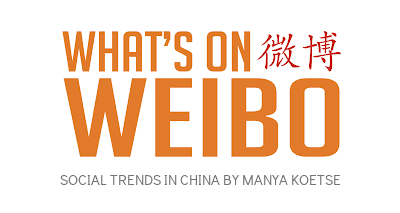
China Insight
China Reacts: 3 Trending Hashtags Shaping the Tariff War Narrative
From historic speeches to trending slogans, this is China’s official media response to the US tariff escalation.
Published
4 days agoon
April 13, 2025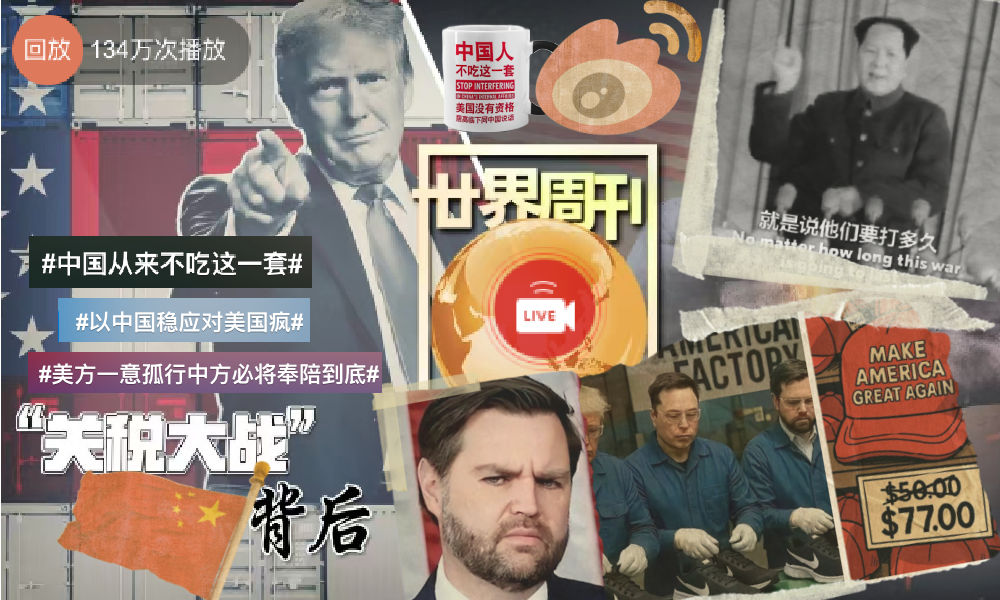
What do Mao’s 1953 Korean War speech and Yang Jiechi’s 2021 Alaska Summit remarks have to do with the escalating US–China trade war? In Chinese official media responses, history and emotionally charged rhetoric are used to clearly signal China’s stance and boost national confidence. Here, we explore three dominant narratives.
As you probably know by now, April 9 marked “D-Day” for Trump’s rollout of steep tariffs. On Chinese social media, the escalating trade war between China and the US dominated conversation, especially on that “D-Day Wednesday,” when nearly all of Weibo’s top 10 most-viewed hashtags were related to Trump’s tariffs and China’s retaliation.
Since developments are unfolding rapidly, here’s a quick recap:
- 🇺🇸💥 On Wednesday, April 2, President Trump announced steep new tariffs, including a universal 10% “minimum base tariff” on all imported goods, and an additional 34% reciprocal tariff specifically targeting China as part of the so-called “Liberation Day,” set to begin on April 9. Combined with pre-existing tariffs, this would bring the total tariff rate on Chinese goods entering the United States to over 54%.
- 🇨🇳⚔️On Friday, April 4, China’s State Council Customs Tariff Commission Office issued an announcement stating that, starting April 10, an additional 34% tariff would be levied on all imported goods originating from the United States, on top of existing tariff rates.
- 🇺🇸⚔️On Tuesday, April 8, Trump vowed to increase tariffs on Chinese exports by an additional 50% if Beijing would not withdraw its 34% counter-tariffs.
- 🇨🇳💥On Wednesday, April 9, China’s finance ministry announced it would further raise tariffs on US goods to 84% starting the following day, in retaliation for the newly imposed 104% tariff on Chinese goods.
- 🇺🇸💣On Wednesday, April 9, Trump then did a U-turn and halted the new steep tariffs for dozens of countries for 90 days, except for China, followed by yet another threat of an additional 21%, bringing those import taxes to 125%.
- 🇺🇸🚨On Thursday, April 10, it was clarified by the White House that tariffs on China would actually total 145%, combining the previously announced 125% with a 20% import tax levied for fentanyl smuggling.
- 🇨🇳💣On Friday, April 11, Chinese official channels reported that China would adjust its tariff measures on important goods from the US starting April 12, raising the rate from 84% to 125%. A related hashtag became no 1 trending topic on Weibo, where it received over 500 million views by Friday night (#对美所有进口商品加征125%关税#).
- 🇺🇸⬅️ On Friday, April 11, Trump’s administration announced that it will exempt smartphones, computers and some other electronic devices from the new tariffs, including the 125% levies imposed on Chinese imports (#特朗普政府再度退缩#; #美国免除智能手机电脑对等关税#).
There are hundreds of hashtags and trending topics circulating across Chinese platforms — from Weibo to Toutiao, from Kuaishou to Douyin — related to the latest developments in the US–China trade war. The topic is super popular, but censored comment sections and removed images also reveal just how sensitive it can be at times.
The biggest hashtags and slogans are those initiated and amplified by official channels. From press conferences to hashtags and visual propaganda, you can see a clear strategic media narrative that draws on history, national pride, and patriotism to frame recent developments, mobilize public sentiment domestically, and show China’s resilience to the rest of the world.
Here, I’ll highlight three hashtags that have recently become top trending, each representing a different kind of official narrative or rhetoric in response to the ongoing developments.
1. China Won’t Back Down
(China will see it through to the end #美方一意孤行中方必将奉陪到底#)
The message that China will not be intimidated by the US is one that echoes across Chinese social media these days, reinforced by official channels.
On April 9, the Weibo account of Chinese media outlet Guancha (@观察者网) and the state-run New Era China Foreign Affairs Think Tank (@新时代中国外交思想库) posted a video showing part of a speech given by Mao Zedong on February 7, 1953, during the final stages of the Korean War at the 4th Session of the 1st National Committee of the Chinese People’s Political Consultative Conference (CPPCC).
In the short fragment, Mao Zedong says:
🇨🇳📢 “As to how long this war will last, we are not the ones who can decide. It used to depend on President Truman, and it will depend on President Eisenhower, or whoever becomes the next US President. It’s up to them. No matter how long this war is going to last, we’ll never yield. We’ll fight until we completely triumph.”
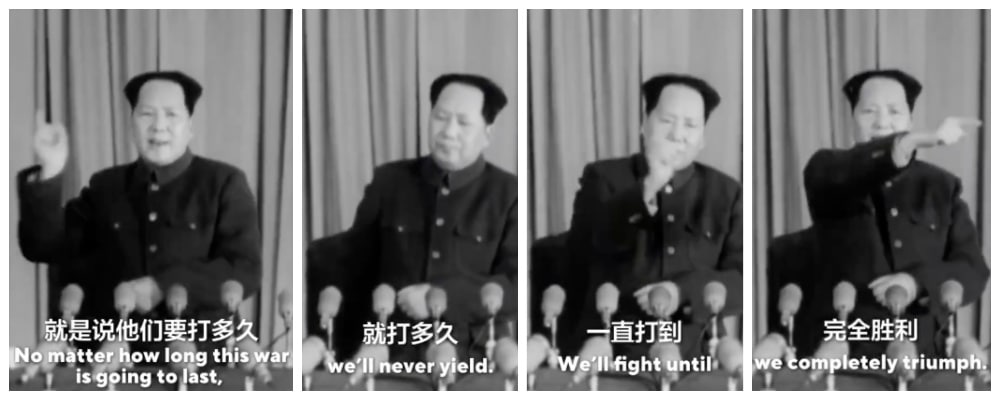
The 1953 speech by Mao was also posted on the US social media platform X by Mao Ning (@毛宁), spokesperson for China’s Ministry of Foreign Affairs. The video was then also spread by blogging accounts and regular netizens. History blogger Zijin Gongzi (@紫禁公子), who has over 435k fans on Weibo, reposted the video, writing:
💬 “Our forefathers never bowed their heads to strong enemies. How could we easily accept defeat? (..) We must not lose this spirit, we must let everyone know that we have a strong backbone and will never bow down.”
Together with the Mao video, the hashtag used by the Think Tank and many other Chinese media accounts, such as People’s Daily (@人民日报), is “If the US obstinately clings to its course, China will fight to the end [lit. accompany them to the end]” (#美方一意孤行中方必将奉陪到底#) and “fight to the end” (#我们奉陪到底#).
These phrases in part come from a press conference given by Ministry of Foreign Affairs spokesperson Lin Jian (林剑) on April 8. Here, he said:
🇨🇳📢 “I want to emphasize once again that there are no winners in trade wars and tariff wars, and protectionism is no way forward. The Chinese people do not provoke trouble, but they are also not afraid. Pressure, threats, and blackmail are not the proper ways to deal with China. China will inevitably take necessary measures and resolutely safeguard its legitimate rights and interests. If the American side disregards the interests of both countries and the international community and insists on waging a tariff war and trade war, China will fight to the end [lit. inevitably accompany them to the end 中方必将奉陪到底].”
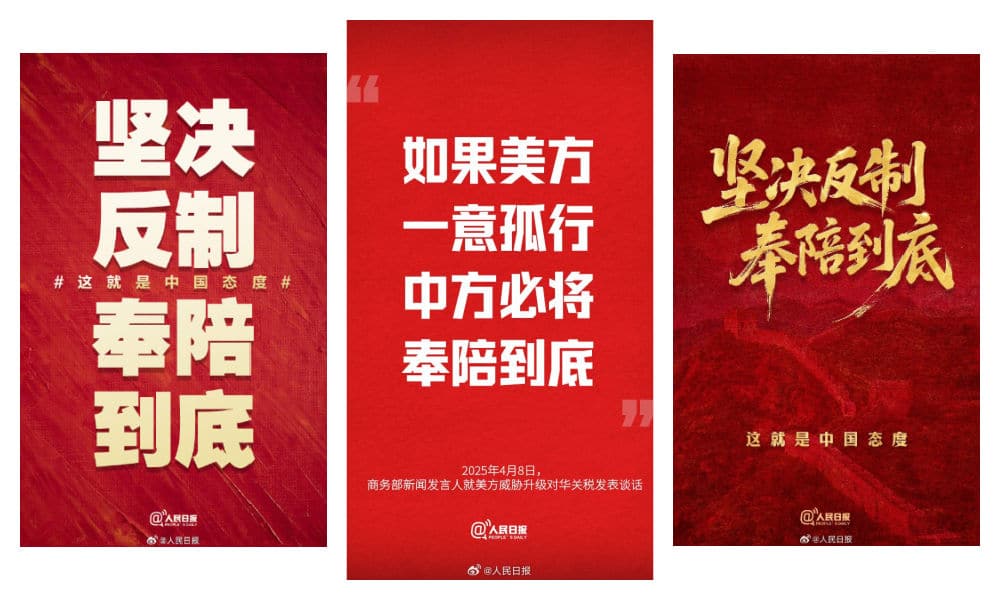
The next day, these words had been turned into digital propaganda posters, with some slight variations in the phrases used. One People’s Daily graphic underlined: “We resolutely take countermeasures, and follow through until the end (坚决反制 奉陪到底),” accompanied by the line: “This is China’s attitude,” which was also turned into a hashtag (#这就是中国态度#).
2. This Is No Way to Deal with China
(Chinese people aren’t buying it #中国人从来不吃这一套#)
Another related yet somewhat different sentiment that dominates Chinese social media—led by official channels—is that China is not only rejecting the trade games played by the US, but is also distancing itself from the American playbook. The message is: this is no way to deal with China. This narrative, and the hashtag surrounding it, emerged slightly later than the first. While the earlier phrase about China not backing down trended as China matched the US in its tariff measures, this one took off with China’s final blow—raising the rate on US imports from 84% to 125% in response to the latest US tariff hikes.
The April 11 statement on the Ministry of Finance website (财政部网站), also posted on Weibo by Xinhua News (@新华社), announced that China would adjust its additional tariff measures on imports originating from the United States effective April 12. It also stated that China strongly condemns the US imposition of excessively high tariffs and will no longer engage in further tariff escalations:
🇨🇳📢 “Given that, at the current tariff level, US goods entering China effectively have no market viability, if the US continues to raise tariffs on Chinese exports to the US, China will no longer respond.”
The main hashtag used by Xinhua and many other media channels is “中国从来不吃这一套” (Zhōngguó cónglái bù chī zhè yī tào), which can be translated as: “The Chinese people have never accepted this,” or more colloquially, “We’re not buying it.”
The phrase initially became popular in 2021, after it was used by China’s top diplomat Yang Jiechi (杨洁篪) during the first major strategic talks of the Biden administration, held in Anchorage on March 19. Due to the occasionally heated exchanges between the two delegations, some called the Alaska talks a “diplomatic clash.”
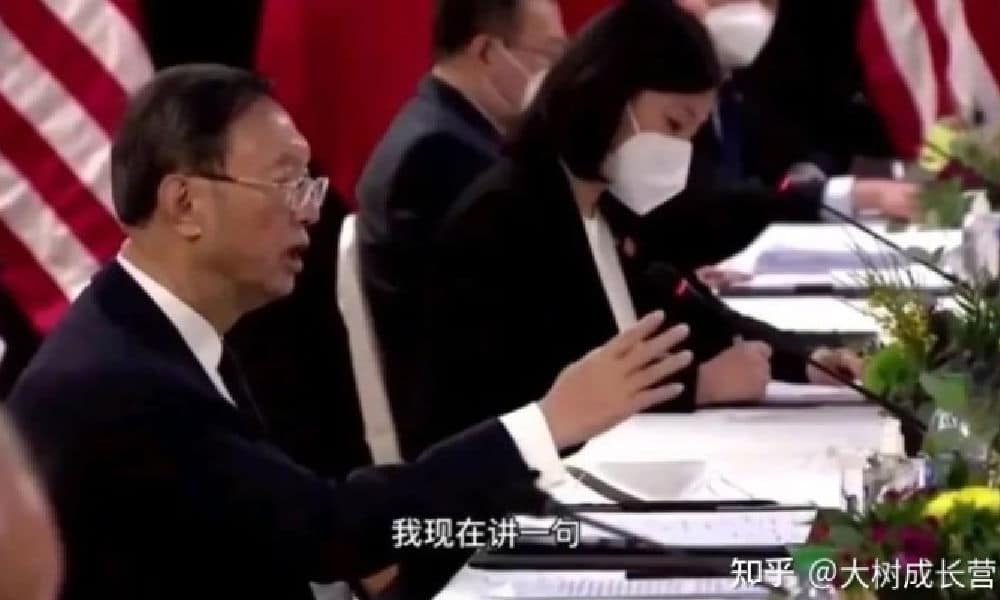
Yang Jiechi during the Alaska Summit
At the time, Yang delivered a lengthy statement to US Secretary of State Antony Blinken and National Security Advisor Jake Sullivan, stressing that Taiwan, Hong Kong, and Xinjiang are “inseparable parts of China,” and that China strongly opposes US interference in its internal affairs. Suggesting the US should focus more on its own human rights issues and racial problems instead of lecturing China, he added the now-famous line: “The US is not qualified to speak to China from a position of strength. The Chinese people don’t buy that” (美国没有资格居高临下同中国说话,中国人不吃这一套).
The phrase quickly went viral—boosted by state media, celebrated by netizens, and turned into a marketing slogan. It now appears on t-shirts, teacups, phone cases, and other patriotic merchandise.
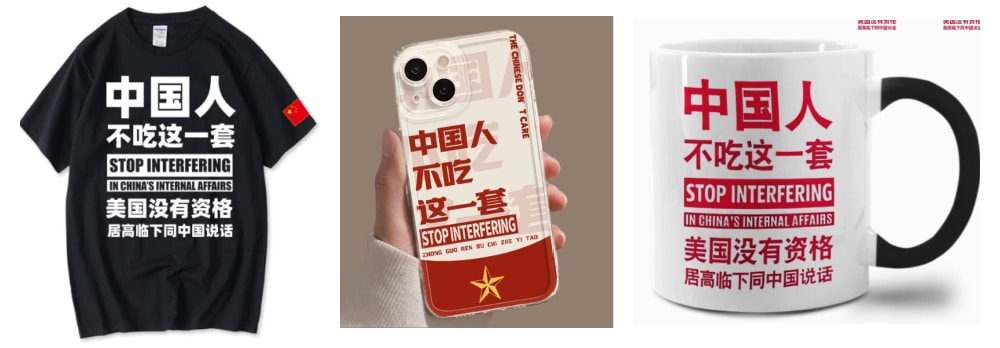
The translation of the phrase still triggers discussions. While merchandise typically translates it as “Stop interfering in China’s internal affairs,” that’s not an accurate translation. During the Alaska Summit, interpreter Zhang Jing (张京) (who gained viral fame at the time) translated it in real-time as “This is not the way to deal with the Chinese people.” However, some commentators and professional translators argued this was a missed opportunity to take a tougher stance, as the Chinese phrase is much sharper and could be loosely translated as: “We Chinese people don’t swallow this crap.”
In Alaska, Yang emphasized that dealing with China requires mutual respect, and that history will prove that trying to strangle China’s rise would ultimately hurt the US itself (“与中国打交道,就要在相互尊重的基础上进行。历史会证明,对中国采取卡脖子的办法,最后受损的是自己。”)
Similar sentiments now dominate online media discourse in China. The slogan has evolved from “The Chinese people don’t buy this” (中国人不吃这一套) to the more authoritative “China has never bought this” (#中国从来不吃这一套#)
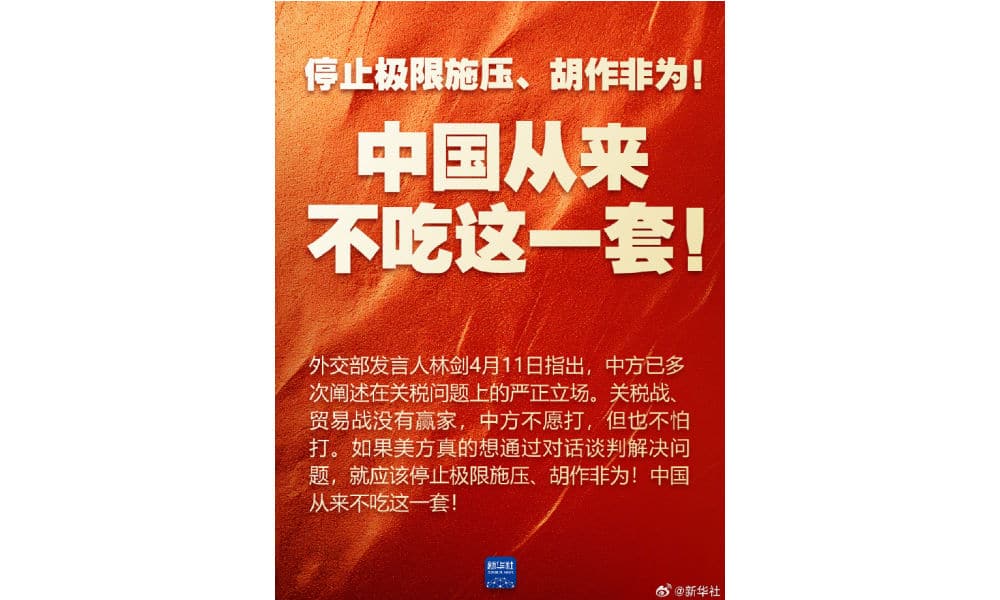
Adding fuel to this message are hashtags like “America’s repeated imposition of excessively high tariffs on China has become a joke” (#美方对华轮番加征畸高关税已沦为笑话#).
Ridiculing America (especially Trump) has become a popular pastime on Chinese social media this past week, with a flood of Chinese and international memes circulating widely.
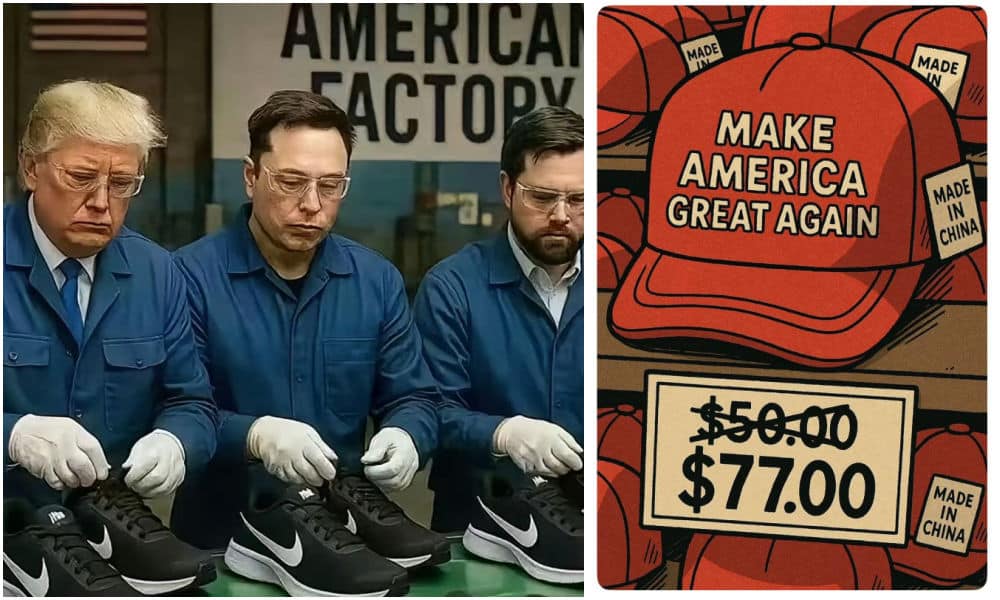
Especially popular are memes mocking the idea of America as a future “Made-in-America” manufacturing hub, the irony of iconic American products (like MAGA hats) being made in China, and how everyday essentials such as eggs have reached historic price highs in the US (a crisis partly caused by bird flu but now worsened by the tariffs).
On April 13, the hashtag “The 145% tariff makes one panda plush toy cost 80 dollars” (#145%关税让1只熊猫玩偶卖80美元#) also went trending, sparking jokes about how even the most trivial things could suddenly become luxuries in the US.
3. China is the Most Stabile Superpower
(Countering America’s madness with China’s stability #以中国稳应对美国疯#)
A third stance that has been dominant in Chinese official online discourse is that China’s development does not rely on anyone’s favors (#中国发展从不靠谁的恩赐#, derived from a quote by Xi Jinping), and that despite the US’s measures, China’s rise on the world stage cannot be stopped. In fact, the narrative suggests that these actions by the US are only accelerating China’s ascent.
A commentary piece published by state broadcaster CCTV (@央视新闻) on April 11 quoted Professor Li Haidong (李海东) of China Foreign Affairs University, who stated that the US’s increasingly aggressive behavior reinforces the notion that it is using tariffs as a tool of extreme pressure; as a weapon to serve its own interests. According to Li, this reflects America’s hegemonic mindset, aiming to assert superiority by intentionally creating crises.
But rather than strengthening the US, the commentary argues, these recent measures are backfiring and are damaging the US’s domestic economy and undermining its global credibility.
In contrast to the US’s presumed recklessness and “hysterical approach,” China is depicted as a “responsible world leader,” bringing certainty to an uncertain world by “responding with its own stability” and proving to be, supposedly, a more reliable engine of global growth. The commentary states:
🇨🇳📢 “As the tariff storm strikes, China is using its own ‘stability’ to resist the trials and tribulations, by upholding rules, defending justice, and steering the big ship of globalization through treacherous countercurrents, toward the right path of openness and cooperation.”
To promote the piece on social media, CCTV used the hashtag “Responding to America’s madness with China’s stability” (#以中国稳应对美国疯#).
This sentiment was echoed by nationalist bloggers, such as Tangzhe Tongxue (@唐哲同学), who posted on April 13:
💬 “In this world, besides China, the rest are all just a poorly equipped small-town theater troupe (草台班子).”
The phrase “草台班子” (cǎotái bānzi) literally refers to a makeshift opera troupe performing on a shabby rural stage, and is used to describe an incompetent group of amateurs.
The blogger’s comment indirectly responds to comments made by US Vice President JD Vance, who defended Trump’s tariffs in a Fox News interview by saying: “To make it a little more crystal clear, we borrow money from Chinese peasants to buy the things those Chinese peasants manufacture.”
That remark sparked controversy online, with many netizens calling it ignorant. Some pointed out that Chinese people were already wearing fine silks when Westerners were still wrapped in animal skins fishing in the sea, and flipping the narrative to portray Americans as the real “country bumpkins.”

Meme shared online.
This sentiment was reinforced by another hashtag trending on Weibo on April 13: “You think we’re scared, but we actually don’t care” (#你以为我们scared其实我们不care#).
That line comes from a Channel 4 interview with Gao Zhikai (Victor Gao/高志凯), Vice President of the Center for China & Globalization (CCG), who stated:
🇨🇳📢 “China is fully prepared to fight to the very end. Because the world is big enough that the United States is not the totality of the market in the world. So if the United States wants to go in that direction of completely shutting itself out of the Chinese market, be my guest. [Interviewer: Yes and China will lose the US market..] We don’t care. We don’t care. China has been here for 5000 years, and for most of the time there was no United States and we survived. If the United States wants to bully China, we will deal with the situation without the United States. And we except to survive for another 5000 years.”
While this reflects the official position and is widely echoed across social media, others stress the importance of remembering history; particularly China’s “Century of Humiliation” (百年国耻), which was marked by war, aggression, and unequal treaties imposed by foreign powers. Just like other historical anniversaries, some bloggers argue that Trump’s tariff “D-Day,” April 9, should not be forgotten (“今天是每个中国人难以释怀的日子”) and that it marks another reason for China’s renewed rise.
In a video posted by CCTV’s short video platform Xiaoyang Shipin (小央视频) on April 13 (link), the narrator states:
🇨🇳📢 “The so-called global “beacon” now puts “America first.” It slaps allies in the face, treats the world with predatory practices, and makes other countries pay for MAGA, pushing the fragile word economy over the edge, and pitching itself against the whole world. With China here, the sky won’t fall. With around 5% economic growth, China adds the output of a mid-sized European economy every year. China has hundreds of millions of skilled workers. The Chinese people are well known for their strong work ethic. China’s development over the past seven decades is a result of self-reliance and hard work, not favors from others, (..) Global businesses believe the next China is still China and the best is yet to come (..) Markets need to restore faith. Between the pond of closed markets, and the ocean of economic interconnectivity, which one would you choose?”
Overall, packaged across different media — from hashtags to short videos, from press conferences to news reports, and from digital slogan posters to Ministry of Foreign Affairs tweets — China’s strategic political media messaging is clear and quite powerful, despite the fragile and censored environment it operates in: China is not afraid to strike back, China will lead with calm, and eventually, China will emerge as the winner. Whatever happens next remains to be seen, but when it comes to turning crisis into opportunity, China’s official media channels have already done just that.
By Manya Koetse
(follow on X, LinkedIn, or Instagram)
THIS ARTICLE IS PART OF WHAT’S ON WEIBO CHAPTER: “THE US-CHINA TARIFF WAR ON CHINESE SOCIAL MEDIA“
Spotted a mistake or want to add something? Please let us know in comments below or email us. First-time commenters, please be patient – we will have to manually approve your comment before it appears.
©2025 Whatsonweibo. All rights reserved. Do not reproduce our content without permission – you can contact us at info@whatsonweibo.com.
China Insight
From Trade Crisis to Patriotic Push: Chinese Online Reactions to Trump’s Tariffs
“This moment is the time to reflect on our unity. If we can choose domestic alternatives, we should.”
Published
2 weeks agoon
April 5, 2025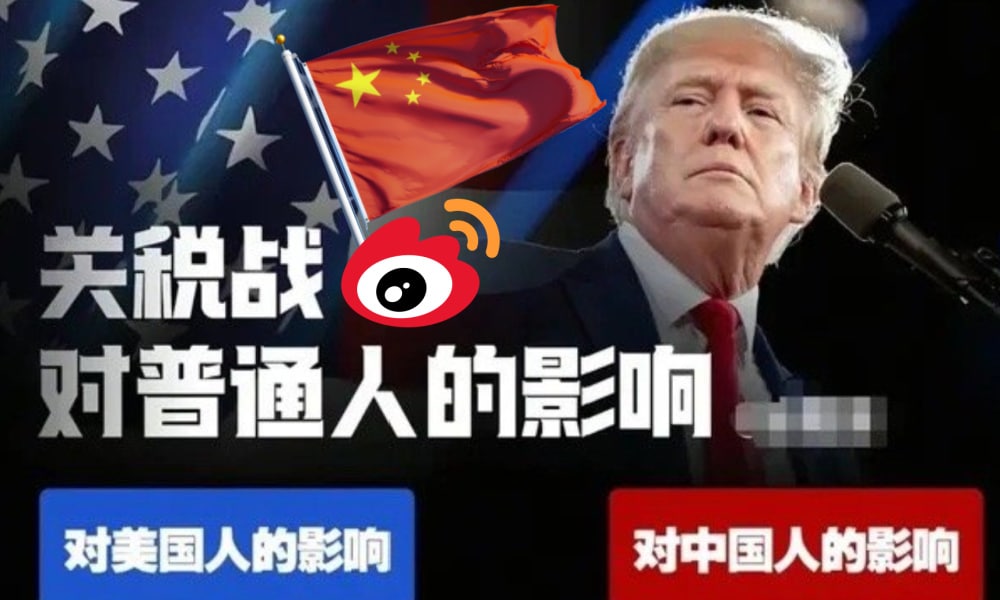
“China’s countermeasures are here” (#中方反制措施来了#). This hashtag, launched by Party newspaper People’s Daily, went top trending on Chinese social media on Friday, April 4, after President Trump announced steep new tariffs on Wednesday, including a universal 10 percent “minimum base tariff” on all imported goods and especially targeting China with an additional 34% reciprocal tariff as part of so-called “liberation day.”
Countermeasures were announced on Friday. China’s State Council Customs Tariff Commission Office (国务院关税税则委员会办公室) issued an announcement stating that, starting from April 10, an additional 34% tariff will be levied on all imported goods originating from the United States, on top of existing tariff rates.
Other countermeasures include immediate export restrictions on seven key medium to heavy rare earth elements, which are important for manufacturing critical products used in semiconductors, defense, aerospace, and green energy.
“This won’t make America great again”
The official response to the tariffs, both from state media and the government, has been twofold: on the one hand, it criticizes the U.S. for placing American interests above the good of the global community, arguing that the move only hurts the U.S., its people, and the world. On the other hand, the Chinese side stresses that although they do not believe tariff wars are the answer, China is not afraid of a trade war and will not sit idly by, but will respond with equal measures.
Chinese official media have condemned the new tariffs, which led to the largest single-day market drop in years. Describing the reactions of various experts, Xinhua News highlighted a comment by a Croatian professor, stating that the policy will only increase export prices and worsen inflation, ultimately hurting middle- and working-class Americans — and noting that the policy “won’t make America great again” (不会“让美国再次伟大”).
The official announcement by Chinese state media regarding China’s countermeasures received widespread support in its (highly controlled) comment sections, with both media outlets and netizens echoing the message that China will not be bullied by the U.S.
On Xiaohongshu, similar sentiments shnone through in popular posts, such as one person writing:
💬 “Congratulations to the U.S. on receiving a 34% tariff on all its goods! Luckily, very few of the things ordinary Chinese people eat or use come from the U.S. anyway.
#RMB purchasing power #China will inevitably be unified #Consumer confidence #Contemporary Chinese economy #Carrying forward the construction of a Beautiful China”

“Monday’s stock market will be a bloodbath,” another commenter wrote.
One Weibo blogger (@兰启昌) saw the recent developments as another sign of an ongoing trend of “de-globalization” (逆全球化).
But beyond global economics and geopolitics, many Chinese netizens — from Weibo to Xiaohongshu — seem more focused on how the new policies will affect everyday consumers.
Netizens have been actively discussing which goods will be hit hardest by the new tariffs. Based on 2023 trade data, here’s a breakdown of the top exports between China and the United States — and the sectors most likely to feel the impact.

🔷🇺🇸🇨🇳Top 10 Chinese Exports to the U.S.
1. Electronics and Machinery
Includes smartphones, laptops, tablets, integrated circuits, and image processing equipment.
2. Furniture, Home Goods & Toys
Such as video game consoles, lamps, and much more.
3. Textiles and Apparel
Garments, footwear, and accessories like sunglasses.
4. Metals and Related Products
Especially steel and steel-based items.
5. Plastic and Rubber Products
Widely used in packaging, manufacturing, and consumer goods.
6. Transportation Equipment
Electric vehicles, passenger cars, motorcycles, scooters, and drones.
7. Low-Value Commodities
Bulk items used in general trade and low-cost manufacturing.
8. Chemicals
Industrial chemicals and related materials.
9. Medical and Optical Instruments
Includes medical devices and precision instruments.
10. Paper Products
Ranging from office supplies to industrial paper goods.
🔹🇨🇳🇺🇸Top 10 U.S. Exports to China
1. High-Tech Machinery and Electronics
Especially integrated circuits, turbine engine components, and semiconductor manufacturing equipment.
2. Energy Products
Crude oil, liquefied propane and butane, natural gas, and coking coal.
3. Chemicals and Pharmaceuticals
Includes cosmetics, cleaning agents, and various medical drugs.
4. Soybeans
A key agricultural export widely used in food and animal feed in China.
5. Transportation Equipment
Such as automobiles and aircraft parts.
6. Medical and Optical Devices
Medical precision equipment, diagnostic tools, and lab instruments.
7. Plastic and Rubber Goods
Used in both consumer and industrial sectors.
8. Metal Products
Primarily iron and steel exports.
9. Wood and Pulp Products
Lumber, wood pulp, charcoal, and paper goods.
10. Meat
Including beef, pork, and poultry.
Those doing trade with the US, or otherwise involved in made-in-China products, like those working clothing and furniture factories, will inevitably be affected by the tariffs.
“Patriotism isn’t just a sentiment – it’s an action”
Much of the popular online conversation has focused on concrete examples of what kinds of things might get more expensive for Chinese consumers in their everyday lives.
Some bloggers noted that people might start to see price hikes in everyday groceries like dairy, meat, corn, and soybeans. With fewer soybeans coming in from the US, cooking oil prices may also rise.
China is the world’s largest consumer of soybeans, but because domestic production is relatively low, soybeans remain a key import.
Then there are popular American brands in the Chinese market that are expected to get pricier too — like beauty and health products, Starbucks coffee, or Häagen-Dazs ice cream.
Some also predicted a 30% to 40% increase in prices for iPhones and other Apple products.
Contrary to the earlier comment by the Xiaohongshu blogger, some netizens explain just how many American products are actually used by Chinese consumers, with many American companies operating in China — from McDonald’s and Coca-Cola, Walmart to Disney or Warner Brothers, Procter & Gamble to Colgate and Estée Lauder.
What’s noteworthy in these discussions, however, is a strong tendency to point to Chinese alternatives and encourage smart buying instead of following hypes (“理性替代,拒绝跟风”): No need to panic about soybeans — there are domestic alternatives, and China’s own soybean program is getting a boost. Who needs Starbucks when there’s Luckin Coffee? Why buy an iPhone when you can get a Huawei? Skip the Tesla, go for a BYD.
In these discussions, the ‘crisis’ is turned into an ‘opportunity’ for Chinese companies to focus even more on the Chinese market, and for Chinese consumers to, more than ever, actively embrace and celebrate local brands and made-in-China products.
One Chinese blogger (@O浅夏拾光O) wrote:
💬 “This moment is the time to reflect on our unity. If we can choose domestic alternatives, we should. For example, we can use rapeseed oil or peanut oil instead of imported soybean oil; we can buy cost-effective Chinese electronics instead of foreign brands. Support domestic products and respond to the nation’s call to expand domestic consumption.
We must have faith in our country. Only by uniting as one, young and old all together, the entire country working together, can we withstand all hazards. As Professor Ai Yuejin (艾跃进) once said, patriotism isn’t just a sentiment – it’s an action. As long as our core is stable and we are united in spirit, no hardship can defeat us.”
Despite the major happenings and the big words, some people just care about the small things: “As long as KFC and McDonald’s don’t raise their prices, it’s all fine by me.”
See the follow-up to this article here.
By Manya Koetse
(follow on X, LinkedIn, or Instagram)
Spotted a mistake or want to add something? Please let us know in comments below or email us. First-time commenters, please be patient – we will have to manually approve your comment before it appears.
©2025 Whatsonweibo. All rights reserved. Do not reproduce our content without permission – you can contact us at info@whatsonweibo.com.
Subscribe

Chinese New Nickname for Trump Mixes Fairy Tales with Tariff War

China Trending Week 15/16: Maozi & Meigui Fallout, Datong Post-Engagement Rape Case

China Reacts: 3 Trending Hashtags Shaping the Tariff War Narrative

No Quiet Qingming: From High-Tech Tomb-Sweeping to IShowSpeed & the Seven China Streams

From Trade Crisis to Patriotic Push: Chinese Online Reactions to Trump’s Tariffs

“Dear Li Hua”: The TikTok/Xiaohongshu Honeymoon Explained

Beyond the Box Office: What’s Behind Ne Zha 2’s Success?

15 Years of Weibo: The Evolution of China’s Social Media Giant

Tuning Into the Year of the Snake

IShowSpeed in China: Streaming China’s Stories Well

TikTok Refugees, Xiaohongshu, and the Letters from Li Hua

The ‘China-chic Girl’ Image and the Realities of China’s Competitive Food Delivery Market

US-Russia Rapprochement and “Saint Zelensky”: Chinese Online Reactions to Trump’s Shake-Up

“Black Myth: Wukong”: From Gaming Screens to the CMG Spring Festival Gala?

How Ne Zha 2’s Shen Gongbao Became Known as the Ultimate “Small-Town Swot”
Get in touch
Would you like to become a contributor, or do you have any tips or suggestions? Get in touch here!
Popular Reads
-
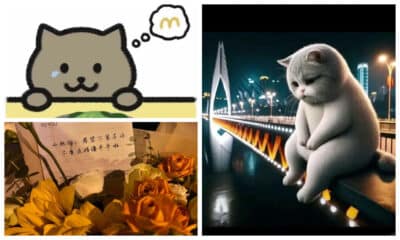
 China Insight11 months ago
China Insight11 months agoThe Tragic Story of “Fat Cat”: How a Chinese Gamer’s Suicide Went Viral
-

 China Digital10 months ago
China Digital10 months agoChina’s 2024 Gaokao Triggers Online Discussions on AI
-

 China Arts & Entertainment11 months ago
China Arts & Entertainment11 months agoSinging Competition or Patriotic Fight? Hunan TV’s ‘Singer 2024’ Stirs Nationalistic Sentiments
-
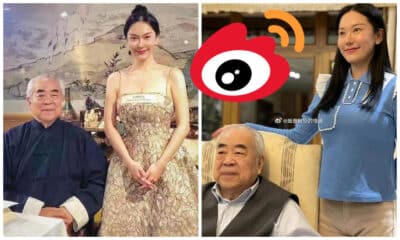
 China Arts & Entertainment12 months ago
China Arts & Entertainment12 months ago“Old Bull Eating Young Grass”: 86-Year-Old Chinese Painter Fan Zeng Marries 36-Year-Old Xu Meng
